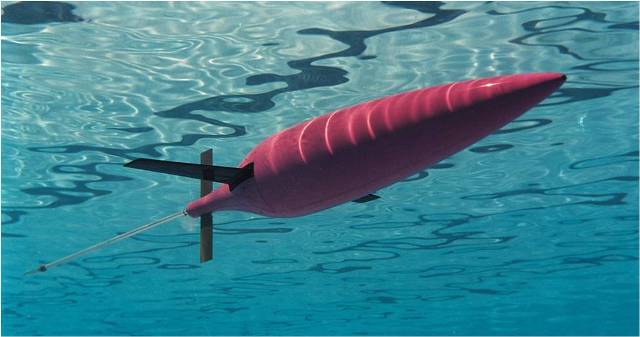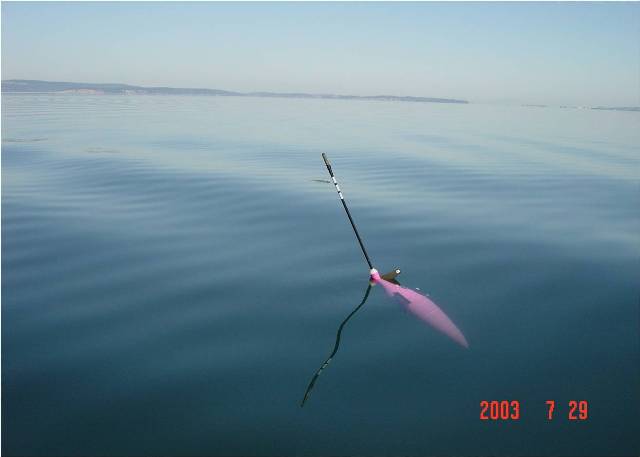Seaglider
SEAGLIDER glides slowly through the ocean propelled by buoyancy control and wing lift to alternately dive and climb along slanting glide paths. It dead reckons under water between GPS navigation fixes obtained at the sea surface to glide through a sequence of programmed targets. It transmits all data collected and receives commands via satellite data telemetry, exposing its antenna above the sea surface for a few minutes between dive cycles.

SEAGLIDER range is sufficient to transit entire ocean basins in missions lasting many months while diving continuously to as deep as 1000 m. Gliders are routinely launched and recovered manually from small boats with a crew of two, avoiding costly reliance on ships. Operation costs a few dollars per kilometer of distance travelled to obtain high resolution profiles of physical, chemical, and bio-optical variables and estimates of depth-averaged current and surface current.

The SEAGLIDER was developed by the University of Washington Applied Physics Laboratory and School of Oceanography, leaders in AUV design, development and experimentation for a half century. It heralds a revolution in AUV oceanographic applications. This page is the gateway to the Australian National Facility for Ocean Gliders fleet near realtime data. All gliders are instrumented with a Seabird-CTD, WETLabs BBFL2SLO 3 parameter optical sensor (measuring Chlorophyll-a, CDOM & 660nm Backscatter) and a Aanderaa Oxygen optode.

